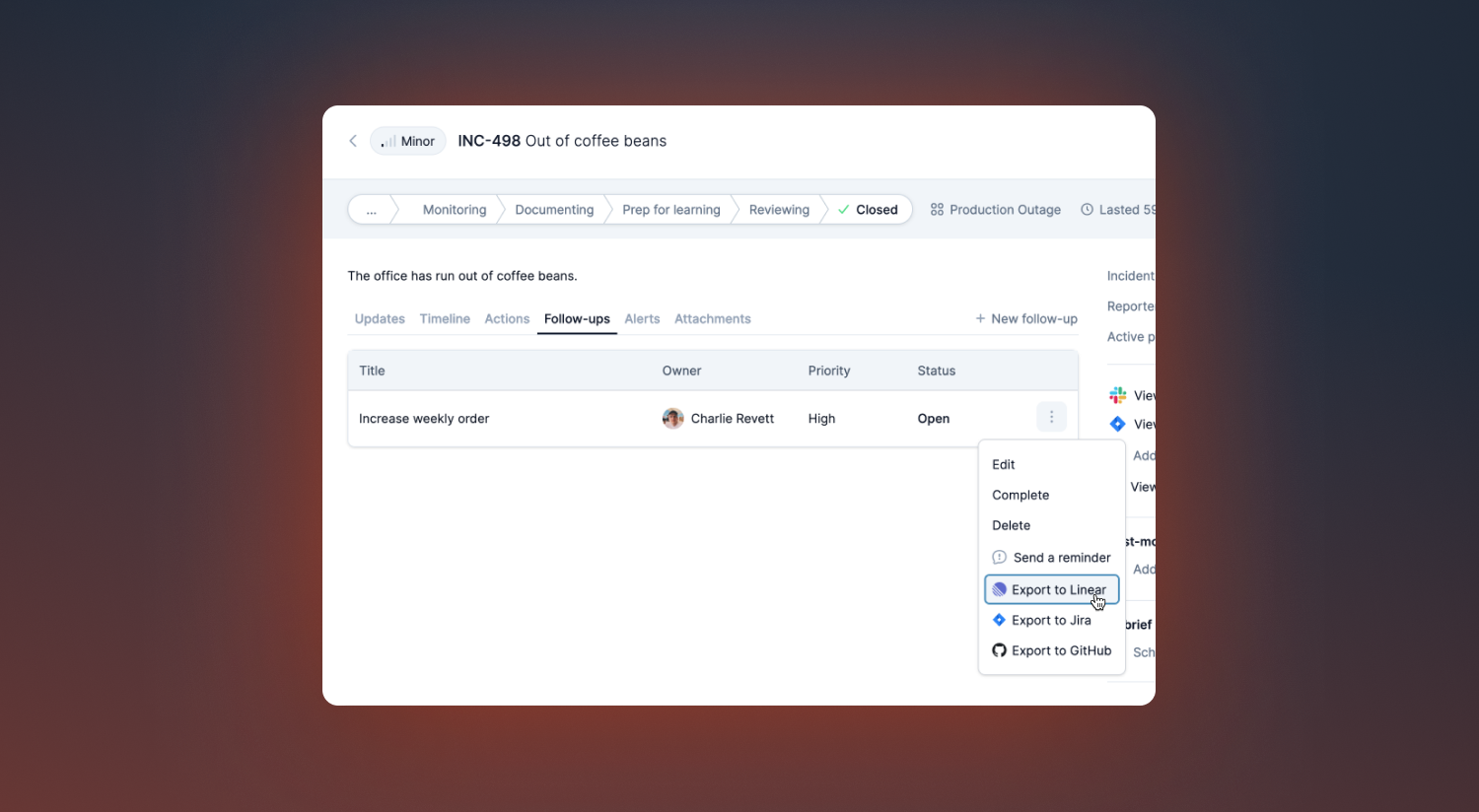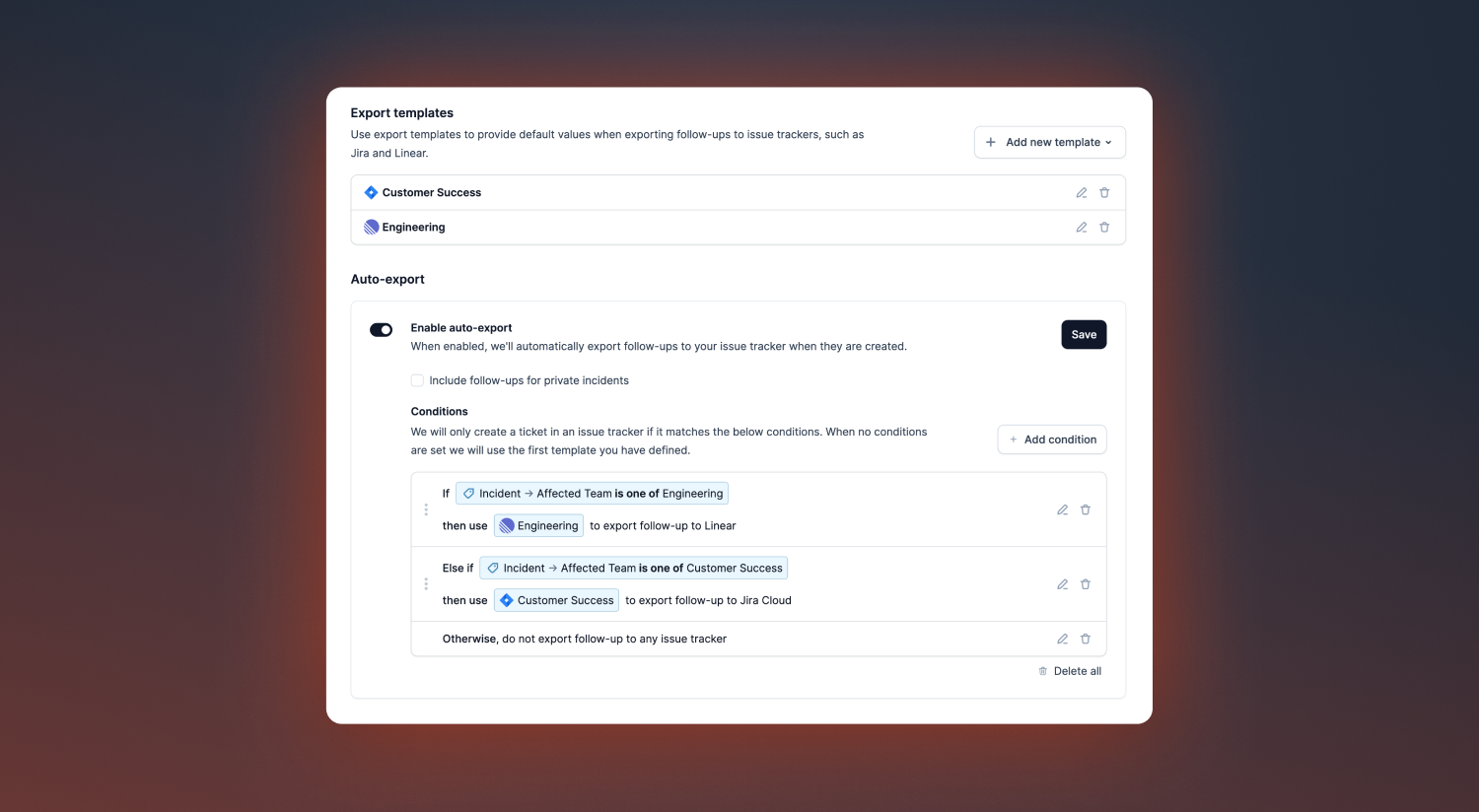Auto-export follow-ups
October 10, 2023

Follow-ups are more than just action items to be completed after an incident is resolved; they are the building blocks of continuous improvement for your team. They ensure that lessons are learned and changes are made. But their effectiveness multiplies when they are seamlessly integrated into your team's issue tracker – the very tool your team uses daily for task management.
Exporting follow-ups to your issue tracker ensures they are not only visible, but also actionable and aligned with your team's existing workflow. This centralization makes them easier to monitor, act upon, and ultimately resolve.
Before this launch, the process of exporting follow-ups from incident.io to your issue tracker was manual. It was a step that needed to be done, but it was time-consuming and left room for human error.

Introducing automatic exports
We're excited to roll out automatic exporting of follow-ups, which automates this process when using Jira or Linear as your issue tracker.
Under-the-hood, the feature is powered by export templates, which allow you to specify the exact format and destination for your follow-ups within your issue tracker. Configure it once and forget about it; your follow-ups will automatically populate where they need to be.
You can further refine this process using conditions, allowing for rules-based automated exports. This allows for follow-ups to be exported to different issue trackers based on the incident they were created in.
For example:
Export using my Jira export template when a follow-up is added to an incident with the "Affected Team: Customer Success" custom field set.
Export using my Linear export template when a follow-up is added to an incident with the "Affected Team: Engineering" custom field set.
You can leverage the power of conditions to ensure that your follow-ups land in the correct issue tracker project each time.

🚀 What else we’ve shipped
New
- You can now copy an incident ID or reference via the CMD+K menu while on an incident page
Improvements
- We no longer send a message to the incident channel when the incident is published on an internal status page
- The incident pulse chart now uses straight lines, which looks nicer when there's less data
- We show a slightly less scary message when we couldn't create a Slack channel straight away
- The events we use to create Google Meet calls now have a clearer title
- Status page sub-page URLs are now formatted correctly for you
Bug fixes
- Fixed an issue where you wouldn’t see newly added/edited catalog entries until you refreshed your browser
- We no longer show the heading of a decision flow twice when posting the result to Slack
- Fixed deriving custom field values upon incident creation
- Avatars and badges no longer show up in conditions badges
- Fixed showing custom duration metrics within our insights graphs
- Fixed a bug when loading our self-serve billing page
- Improved our handling of Jira issue types within export templates
- We now handle the processing of PagerDuty incidents concurrently more efficiently
So good, you’ll break things on purpose
Ready for modern incident management? Book a call with one of our experts today.

We’d love to talk to you about
- All-in-one incident management
- Our unmatched speed of deployment
- Why we’re loved by users and easily adopted
- How we work for the whole organization



